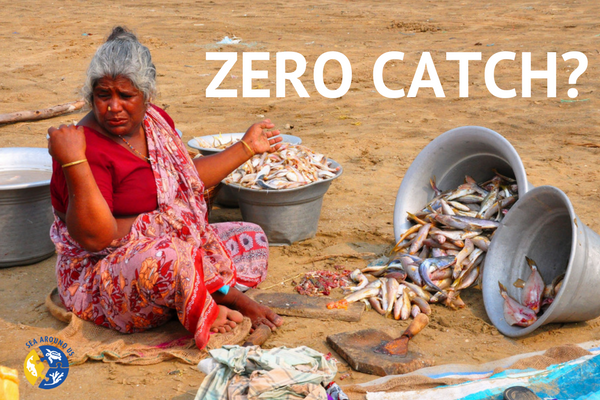
Fish sale at the beach. Photo by indiawaterportal.org, Flickr.
The morning after accepting the 2017 Ocean Award in the Science category, the Sea Around Us leading team, Daniel Pauly and Dirk Zeller, met with the British press at the Science Media Centre.
After receiving praise for their Nature Communications paper “Catch reconstructions reveal that global marine fisheries catches are higher than reported and declining” and the Global Atlas of Marine Fisheries, Pauly and Zeller were asked to explain the Sea Around Us’ findings regarding the fact that global fish catch is 50 per cent higher than what is officially reported by the FAO.
They pointed out that, given that UN stats are not differentiated by fisheries type and/or sectors, they decided to analyze them bottom up by working with scientists from more than 200 countries. “The technique we used is based on the principle that if a fishery exists but you don’t have any data, it is not right to put a zero there, because if you put a zero there this becomes a very precise number, which is ‘zero catches.’ If you put ‘no data available’ into a database, it will be converted into a zero also,” Pauly said at the beginning of the press briefing.
Both scientists went on to explain that governments tend to report on industrial vessels and often ignore how much fish is caught by small-scale fisheries, such as artisanal, subsistence and recreational fisheries. So, they are underreporting their catch to the FAO, the FAO is making these data available and when international organizations or research groups look for such data, they also end up underestimating what’s really going on in the waters of certain countries.
How does the Sea Around Us get more accurate numbers?
LISTEN to Dr. Pauly and Dr. Zeller’s explanation on this audio file.

